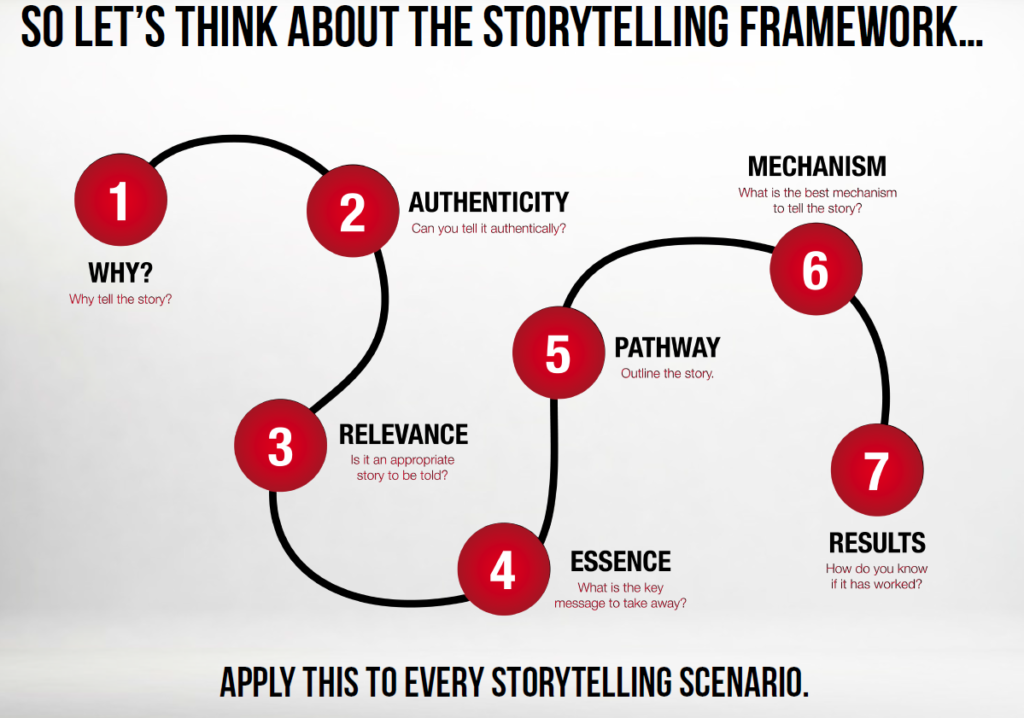People aren’t buying what you’re selling, they’re buying you and your stories
In our media saturated world, cutting a path through the forest of fake news and content clutter can be a herculean task. Even now, as I sit down to write this post, I’m pausing to wonder what image I should use to grab your attention, as you casually scroll through your LinkedIn feed on the way to work. And in that moment of fleeting attention, I’m weighing up the title and tagline I’ll craft to entice you to actually read this post. Don’t even get me started on the question of which hashtags to use!
Why do I and countless other writers, journalists and business professionals worry about these insignificant details, instead of focusing all our creative powers on writing the best possible content we can? It’s a great question and I’m not sure I know the answer. What I do know is that the business world (and the world at large) has an unquenchable thirst for content, coupled with an incredibly short attention span. We’re constantly searching for:
- Newer, fresher, more disruptive or provocative
- Stimulating, gamified, controversial or counter-intuitive.
I sometimes wonder how long the the merry-go-round of content creation, consumption and commoditisation can continue? In a business context, the question we often ask ourselves is …
“How can we create a compelling impression so our product or service remains top of mind long after we’ve left the building?”
If message transfer is the goal we seek, then storytelling is undoubtedly the best vehicle to help us to achieve this goal.
The science of stories
I know from personal experience that selling is first and foremost about making human connection. But scientific evidence also shows us that one of the best ways for humans to connect, to transfer knowledge or embed new ideas is through the medium of storytelling.
Our innate love of stories is unlocked for most of us in childhood, where we learn important life lessons and family values at the knee of our parents and grandparents, but storytelling runs far deeper than that.
The Harvard Business Review published some of Paul Zak’s enlightening research on how the human brain responds to a good story. Zak is the founder of the Center for Neuroeconomics Studies. His research team measured the blood, heart rate and skin conductors of test subjects to see how the human brain reacts to storytelling. They found out that two primary emotions occur when a compelling story is heard: distress and empathy. When these emotions are triggered, the brain releases two hormones. One is cortisol, which focuses our attention, the other is oxytocin, which stimulates the empathy we feel.
This compelling research yielded one startling fact: A good story can actually change our brain chemistry in a way that influences our behavior.
Expanding influence through storytelling
The real power of a great story is it’s ability to transport us into the lives of other people. In business, you can tap into this natural human curiosity and empathy by sharing a character driven story, which includes an emotional component that your audience can connect to. The story of your company founder perhaps and what prompted them to strike out on their own. Of course, Paul Zak and his research team figured this out more than a decade ago:
Can you teach someone to be a great storyteller?
In theory, sales training should help sales professionals tell the story of their products and services in a way that compels a prospect’s interest and attention. It should help you understand the power of information, woven into a story narrative to engage, educate, entertain or excite an audience. It should help you tease out the most impactful elements of your story and use these as a way to draw people into your world. It should … but unfortunately it rarely does.
So how can you incorporate storytelling into your day to day sales activities and create a story arc for the products or services you sell? Here are a few tips …
- Select a lead character that your prospect can identify with. Your founder, a current customer with a similar problem, even a ‘future version’ of your prospect, could do the trick.
- Encapsulate the problem they were/are facing. Think of this as the hero’s journey part of your story.
- Tell the story of how your product, service or team helped them succeed. Don’t just focus on the positives, explore the complexity of the problem, the personal and professional impacts and the risk of doing nothing.
- Focus on the details of the story itself, the sights, sounds and sensations, not just a pitch dressed up to look like a story.
Knowing where and how to start your storytelling journey can often be the hardest first step to take. So with the kind permission of Andrew Griffith’s (one of the best storytellers I’ve ever met) consider using this storytelling framework as your starting point.
I’d like to leave the final word in this post to another wonderful storyteller, Bernadette Jiwa. Through her business The Story of Telling, her many books on the subject of creating connection and cut-through in business and her fascinating Ted Talk The Secret to Spreading Ideas, Bernadette explores every aspect of telling impactful, engaging and empowering stories, that transcend business and allow people to connect with one another on a human level.




Recent Comments